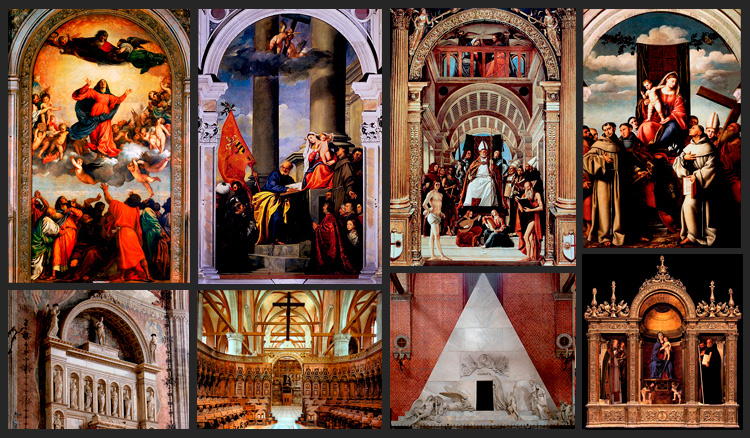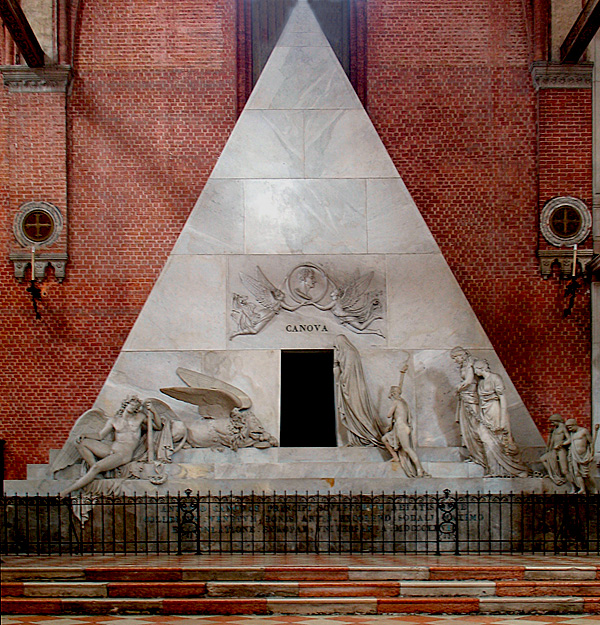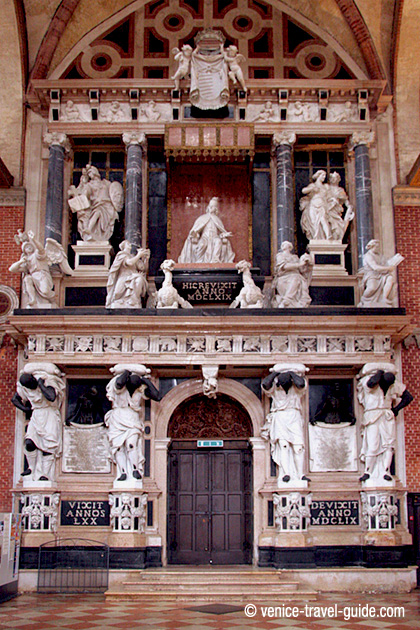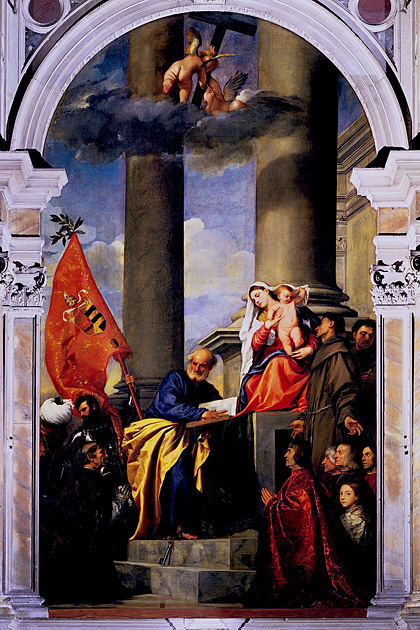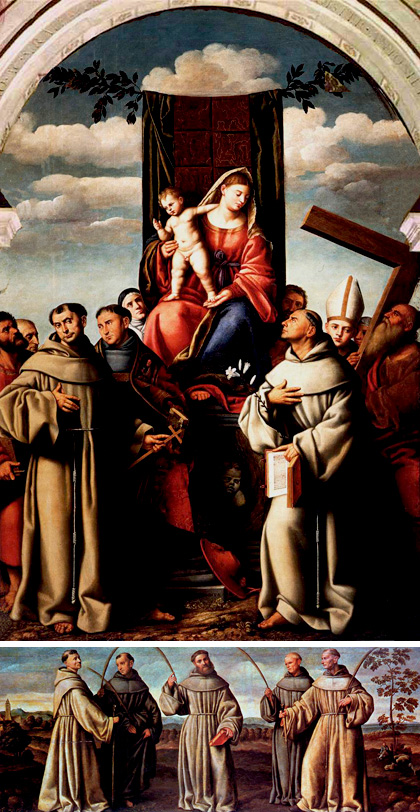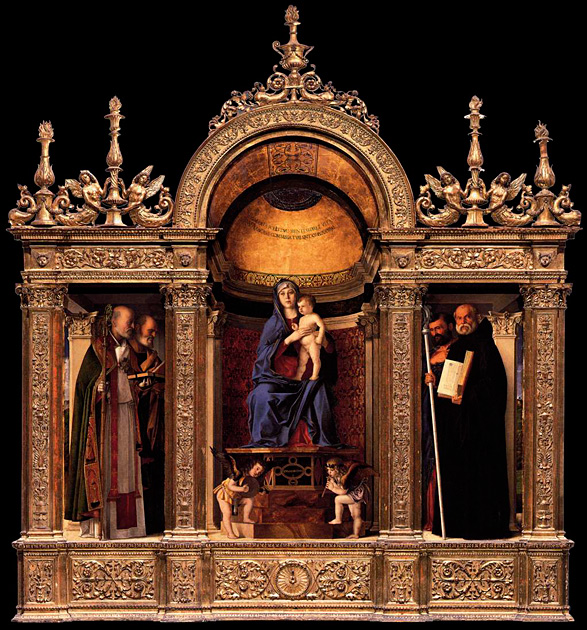
Monument to Alvise Pasqualigo (left)
The work was erected at the behest of the same Procurator of St. Mark was still alive.
- Artwork: Monument to Alvise Pasqualigo.
- Artist/Author: Lorenzo Bregno
- Date: 1528
- Artistic Technique: Sculpture
- Location: Internal Façade, on the left (number 1). See church plan.
Monument to Gerolamo Garzoni (center)
The magnificent Baroque monument is dedicated to Senator Gerolamo Garzoni died in the siege of Negroponte in 1688. The strong figure of the Garzoni, armed and standing, being crowned by an angel among the statues of Venice and Religion.
- Artwork: Monument to Gerolamo Garzoni.
- Artist/Author: Anonymous
- Date: 1688
- Artistic Technique: Sculpture
- Location: Internal Façade, on the center (number 1). See church plan.
Monument to Pietro Bernardo (right)
The late work of Tullio Lombardo is divided into two parts unrelated: at the bottom an elegant urn is adorned by exquisite bas-reliefs and on the sides of enrollment, Adam and Eve. Worthy of note is the head of Medusa and the eagle with spread wings. The upper part, adding by the children of the senator, Girolamo and Lorenzo, representing the deceased kneeling in front of the Redeemer that turns to St. Peter for recommend it.
- Artwork: Monument to Pietro Bernardo.
- Artist/Author: Tullio Lombardo
- Date: 1538
- Artistic Technique: Sculpture
- Location: Internal Façade, on the right (number 1). See church plan.


